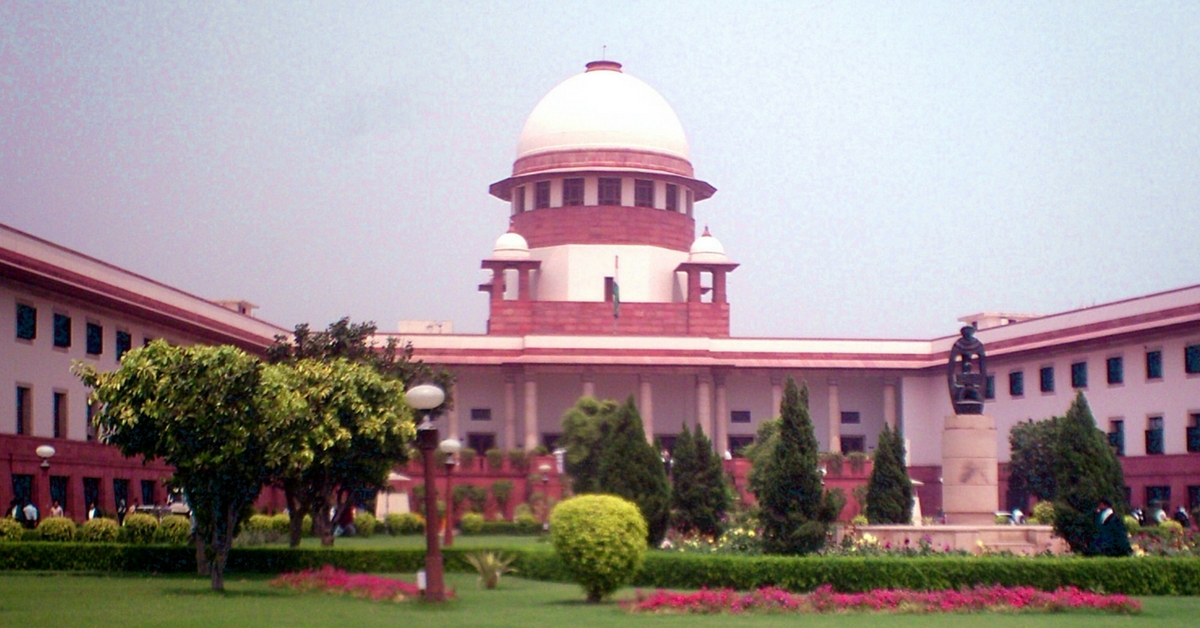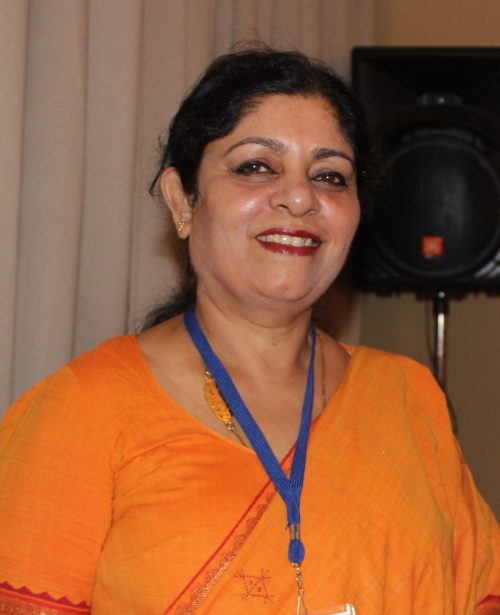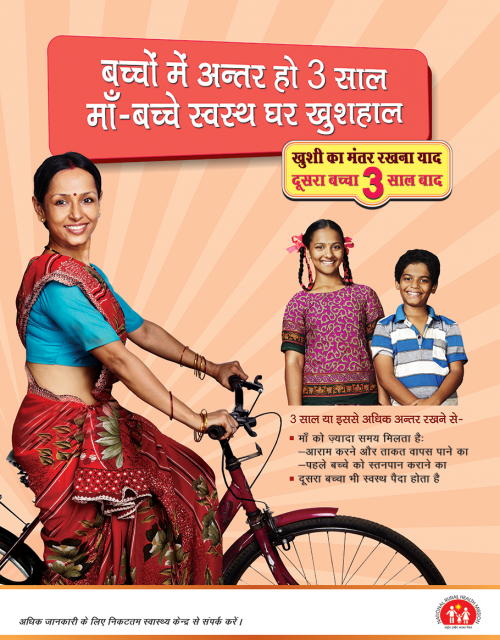Here’s Why the Recent Supreme Court Verdict on Family Planning Is a Game-Changer
Family planning in India has long been a subject of controversy and hushed conversations. Now, a new Supreme Court ruling is bringing the conversation out in the open. Poonam Muttreja from PFI discusses this and the future of family planning in India in a frank and open interview.

Family planning in India has long been a subject of controversy and hushed conversations. Now, a new Supreme Court ruling is bringing the conversation out in the open. Poonam Muttreja from PFI discusses this and the future of family planning in India in a frank and open interview.
Talking about family planning has never been easy. Political parties have, for too long, shied away from the subject, not wanting to earn the ire of their vote banks. The hangover of the nasbandi days continues, with vasectomy being seen more as an ill than a panacea. Myths and misconceptions thrive, and the only way of keeping a check on the population has been by holding sterilisation camps for women, and doling out condoms by way of contraceptive choices. So when the Supreme Court recently gave a historic verdict to ensure sterilisation procedures are conducted in accordance with legal norms, medical procedures, and provisions of the manuals, and that those suffering from failure or complications are adequately compensated, it finally stirred up a larger conversation on planning families, and women’s reproductive rights.
As someone with decades of activism behind her, Poonam Muttreja, Executive Director, Population Foundation of India (PFI), which has been at the forefront of policy, advocacy, and research on population, believes that the landmark judgment has come at the right time and will be vital in paving the way for a more vigorous, inclusive discussion on advancing sexual and reproductive rights of women and men – with, of course, “the media as a powerful ally”. An interview.
Q: Why is the recent Supreme Court (SC) judgment significant, and what does it mean for the family planning programme in India?
A: The judgment has taken the conversation on family planning and women’s rights forward, moving from the narrow prism of numbers to prioritise issues of women’s reproductive health and rights. The verdict underlines the importance of quality of care in provision of family planning services, with special reference to sterilisation. It calls for stopping the practice of holding sterilisation camps within a period of three years.
It has freed state governments from pushing family planning targets, putting a stop to forced/non-consensual sterilisations. The judgment also recommends improving implementation of family planning programmes by ensuring easy access to empanelled doctors, making information available in local languages, and ensuring informed consent of patients.
Q: Why is there is a need to reposition family planning, and how should this be done?
A: A major focus of the national programme so far has been on promoting family planning. This has to change, given that the largest group of young people in Indian history is currently in their reproductive years. Even countries like Indonesia, Sri Lanka, Bhutan, and Nepal offer at least six contraceptive choices, whereas in India we have only female sterlisation at 74.4% followed by condoms at 11.4%, the pill at 7.5% and IUDs (Intra Uterine Devices) at 3.7%.
We must provide more options to the youth, but also put as much emphasis on repositioning family planning and maternal and child health policies and programmes within the women’s empowerment and human rights framework. From promoting ‘population control’ approaches as a solution to stabilise population, we must look at providing services.

Q: Deep rooted myths surround the issue of family planning, including the notion that certain religions want their women to be baby-producing machines.
A: It is unfortunate that women’s bodies and their fertility become objects that fuel fires of communalisation. Improvement in fertility/decline in population is dependent on education, income, and employment opportunities, and not on religion. Declining trend in population growth is secular. The sex ratio among Muslims as per Census 2011 stands at 951 females for every 1,000 men, which is significantly better than 939 among Hindus.
Further, it shows marked improvement from 936 in 2001 to 951 in 2011 among Muslims, whereas for Hindus it shows marginal improvement from 931 in 2001 to 939 in 2011. It is a proven fact that female education, employment opportunities, and access to bigger basket of contraceptive choices help women make the right choice. Contrary to popular belief, women, across the board, want a smaller family.
Q: In the context of family planning, what have been the biggest missed opportunities post-Independence?
A: Not addressing the unmet need and robbing millions of women of the choices for contraception is a huge missed opportunity. This has forced young women to opt for abortions, many of them unsafe. In the absence of counselling and open discussion, they are using emergency contraceptive pills as a family planning method. According to national data, the unmet need for family planning is a staggering 32 million.
Clinics recorded more than six lakh abortions in 2013-14, majority because of lack of access to contraceptives. The focus clearly must be on creating awareness, making services available, expanding the basket of choices, ensuring quality of care, and increasing family planning budgets.

Q: If awareness building is a key aspect, how do you think media can contribute to mobilising support and initiating sustained action to enhance reproductive and sexual rights of women?
A: Media is a vital ally and partner to all of us working to improve access to sexual and reproductive health rights for youth and adolescents. It plays a crucial role in bringing issues around family planning to the attention of policy-makers and influencers. However, so far, coverage around stories on family planning remains negligible. PFI recently conducted a media consultation in Delhi to initiate a debate on family planning, women’s health and reproductive rights. We wish to see family planning become part of the mainstream media narrative.
PFI has worked with media to generate evidence-based coverage on family planning and reproductive health. Our behaviour change communication initiative, Main Kuch Bhi Kar Sakti Hoon, addresses social determinants of health and has deep impact. Media can help in positioning family planning not as a women’s issue or men’s issue but as a people’s issue. Highlighting negative events through sensational headlines and photos that shock and awe is important. However, media also needs to follow up on those stories and track the people they feature. This would help put pressure on the government and related agencies to act and take responsibility.
Media can also help initiate dialogue and debate around positive decisions that can impact demographic trends and quality of life. So far, there has, in fact, been a narrative to demonise family planning. It is time to create champions and join hands in educating women. Men and boys must be part of the discussion, and we must protect women’s sexual and reproductive rights.
Q: Why is involving men so important in something traditionally viewed as “women’s business”?
A: Our experience has been that if you reach out to men, they will be responsive. They treat women’s reproductive health as a “woman’s issue” because that’s the common belief. It is necessary to involve them in family planning. We must emphasise changing mindsets to enable women to take decisions regarding their own health and increasing spousal communication.
There remain myths and misconceptions around vasectomy, including baseless speculation on loss of virility. The state must encourage men to accept vasectomy as a family planning method. At the same time, we should not confine male engagement to vasectomy alone. We must involve them in decisions about educating daughters, choosing the best contraception available, spacing, and age of pregnancy.
Q: What are the strategies for the future?
A: We need to be vigilant and monitor on-ground implementation of the SC directives. The government needs support and we must review adherence to quality guidelines in implementing the injectable roll-out. We also need focus on generating evidence through research on contraceptive options of Progestin Only Pill and Centchroman. This will enhance the basket of contraceptive choices for women and young people.
Find out more about the Population Foundation of India and its work on their website.
Featured Image Source: Legaleagle86 at en.wikipedia [CC BY-SA 3.0 or GFDL], via Wikimedia Commons
Like this story? Or have something to share? Write to us: [email protected], or connect with us on Facebook and Twitter.
NEW: Click here to get positive news on WhatsApp!
If you found our stories insightful, informative, or even just enjoyable, we invite you to consider making a voluntary payment to support the work we do at The Better India. Your contribution helps us continue producing quality content that educates, inspires, and drives positive change.
Choose one of the payment options below for your contribution-
By paying for the stories you value, you directly contribute to sustaining our efforts focused on making a difference in the world. Together, let's ensure that impactful stories continue to be told and shared, enriching lives and communities alike.
Thank you for your support. Here are some frequently asked questions you might find helpful to know why you are contributing?


This story made me
-
97
-
121
-
89
-
167














